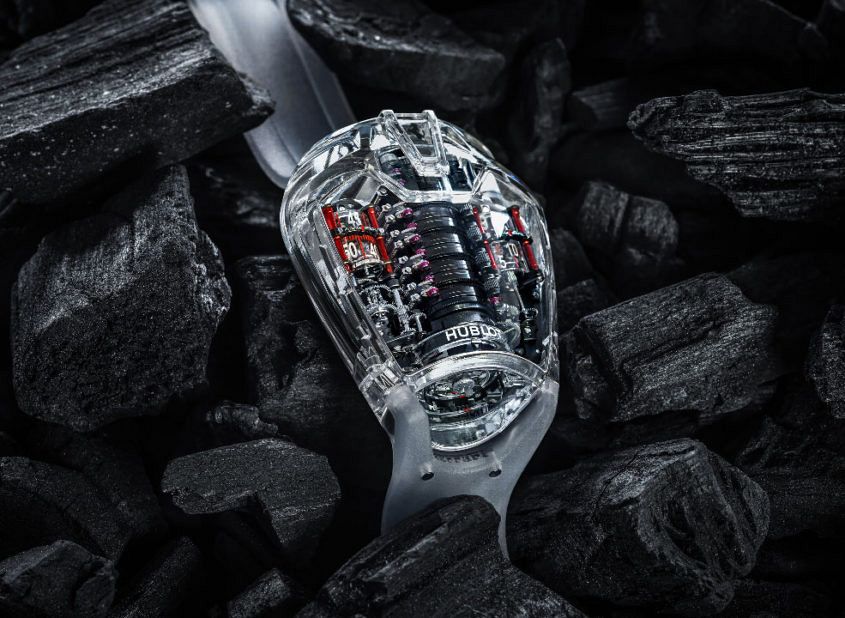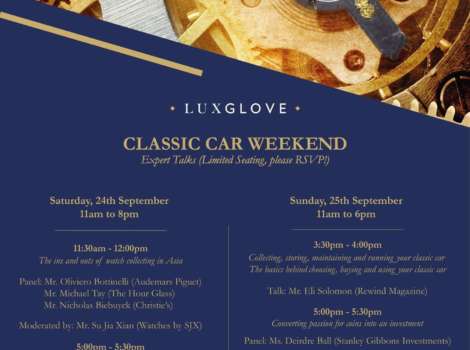 Editor’s note: While Hublot didn’t create the first sapphire-cased watch (that honour goes to Alain Silberstein of all people), the big, bold brand has done an impressive amount of work in a relatively short time to make the ultra-hard, ultra-cool case material mainstream. Don’t believe us? Here’s Sandra’s 2017 timeline of how it went down … First things first, what is sapphire crystal? Essentially, it’s the same stuff used to make a watch ‘glass’ and display casebacks, formed by crystallising aluminium oxide at very high temperatures to create an extremely hard material. Roughly speaking, it mimics what Earth has taken 400 million or so years to do, to form natural sapphire gemstones. For sapphire-cased watches, the middle, bezel and back are milled from solid blocks of the material. Because it’s almost as hard and scratch-resistant as diamond (9 on the Mohs scale, as opposed to 10 for diamond), the task of milling it into the complex shapes required is much more easily said than done. Indeed, sapphire crystal can be cut only by diamond. Harnessing the knowledge it gained from developing a milling technique for Magic Gold (another hugely challenging material), Hublot works with a Swiss specialist as part of…
Editor’s note: While Hublot didn’t create the first sapphire-cased watch (that honour goes to Alain Silberstein of all people), the big, bold brand has done an impressive amount of work in a relatively short time to make the ultra-hard, ultra-cool case material mainstream. Don’t believe us? Here’s Sandra’s 2017 timeline of how it went down … First things first, what is sapphire crystal? Essentially, it’s the same stuff used to make a watch ‘glass’ and display casebacks, formed by crystallising aluminium oxide at very high temperatures to create an extremely hard material. Roughly speaking, it mimics what Earth has taken 400 million or so years to do, to form natural sapphire gemstones. For sapphire-cased watches, the middle, bezel and back are milled from solid blocks of the material. Because it’s almost as hard and scratch-resistant as diamond (9 on the Mohs scale, as opposed to 10 for diamond), the task of milling it into the complex shapes required is much more easily said than done. Indeed, sapphire crystal can be cut only by diamond. Harnessing the knowledge it gained from developing a milling technique for Magic Gold (another hugely challenging material), Hublot works with a Swiss specialist as part of…
The post Ultimate transparency — Hublot’s sapphire evolution, in 13 watches appeared first on Time and Tide Watches.
Continue reading ‘Ultimate transparency — Hublot's sapphire evolution, in 13 watches’
